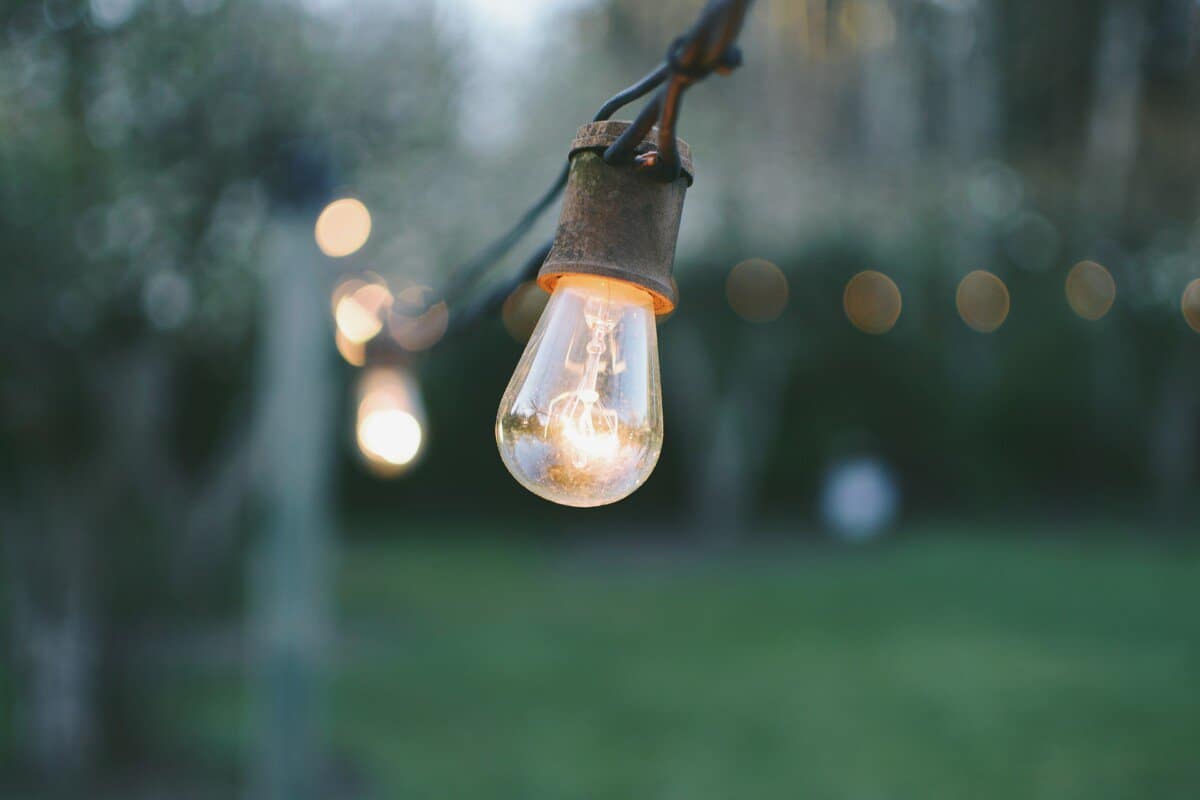Those balmy summer evenings on the patio would be a little slice of heaven, but for one thing – bugs! Your lights attract them, so your choices are to sit in darkness, go inside or put up with them biting you or buzzing around your face, right? Not necessarily. Scientists have been applying their minds to the problem lately with some interesting results.
All light attracts bugs to some extent; there is no light that actively repels them. The seven best patio light styles that attract fewer bugs are LED fairy lights, LED lanterns, yellow compact fluorescent lights, Edison lamps, rope lights, yellow bug lights, or yellow-tinted sodium or halogen bulbs.
You need to get the right kind of light for your patio. Insects are more attracted to certain types of light than others. Do you know the difference between incandescent, LED, halogen, or CFL lights and, more importantly – do the bugs? What about those yellow fluorescent lights that are marketed as being less attractive? Do they work on all bugs or only on specific bugs? What kind of light should you use on your patio?
If you’re like me, I dislike the spray that supposedly repels insects. To me it feels worse that being bit by bugs. That is why the light spectrum and available lights on the market became important to me. We go over all and more below, but here is a quick list of patio and bug lights in recommended order.
| Bug Rating | Pro's | Con's | Amazon Link |
|---|---|---|---|
| Best | Easy Install, Least Bugs | Not as Bright as string lights | Check Price |
| Great | Brightness Settings, great for patio | Harder to install | Check Price |
| V Good | RGB accent colors, go all yellow for Bugs | Harder to mount attractively | Check Price |
| Good | Attractive and color is not the light bulb itself | More suptible to wind | Check Price |
| Nice | Auto On Off, great for porches | Only good for light sockets | Check Price |
| OK | Great Summer Porch light | Only Good for light sockets | Check Price |
| Usable | Great summer yard or accent light | Bright, use farthest away | Check Price |
| Good Zapper | Get the bugs that do come around | The zaps may be a distraction | Check Price |
Types of Lights
Incandescent Lamps
Incandescent bulbs are the oldest, and many countries have banned them because they aren’t energy efficient. They work by heating a wire filament, causing it to glow. Most of the electrical energy used in this type of light is emitted as infrared, i.e., heat. The heat and light emitted by incandescent lamps are attractive to many insects, and entomologists use them in light traps to gather specimens.
Compact Fluorescent Lamps (CFLs)
Compact fluorescent lamps (CFLs) were introduced as a more energy-efficient alternative to incandescent bulbs. They use mercury to produce UV light which is then converted to the visible spectrum by a fluorescent phosphor coat on the inside of the bulb. The efficiency of the conversion of UV light to visible light depends on the lamp’s design and quality. Because mercury is poisonous and can accumulate in the environment, CFLs are classified as hazardous waste when they are thrown out.
Some pest control companies still recommend yellow CFL bulbs as being less attractive to insects than incandescent lamps. Most yellow bug lights sold today are CFLs. However, at least one scientific study has shown that yellow LEDs pull far fewer insects than yellow bug lights.
Light-Emitting Diode Lamps
Light-emitting diodes (LEDs) are the most recent technology and are made of semi-conductors that give off light when subjected to an electrical current. They are much more energy-efficient, last longer, consume less power, and are more durable and cheaper than other bulbs. They can produce monochromatic light in various wavelengths.
A study by Wilson et al. published in 2021 states that when used in light traps, incandescent bulbs don’t attract as many insects as those using UV light. However, they note that LEDs can be both more attractive or less attractive than UV light and incandescent lights. Studies that used white LEDs reported that they were less attractive to insects. These LEDs emit light almost solely in visible wavelengths.
White light-emitting LEDs don’t give off much light in the invisible light spectrum, such as UV and infrared. Other LEDs that emit narrow bands of short-wavelength light attracted more insects than incandescent and fluorescent bulbs. Blue and green light has a shorter wavelength than yellow and orange.
The electromagnetic spectrum consists of various wavelengths of light that can be broken down from shortest to longest as follows –
- Ultraviolet – invisible
- Violet
- Indigo
- Blue
- Green
- Yellow
- Orange
- Red
- Infra-red – invisible
Most insects are attracted to the shorter end of the spectrum, except the bloodsuckers. They often use infrared, a longwave light, to locate their prey.
Light Loving Insects
While many creepy crawlies like cockroaches and earthworms are lucifuges, meaning they flee the light, many flying insects are highly attracted to it. The scientific term phototaxis describes whether an insect’s body responds positively or negatively to light.
For moths, incandescent light is like a drug – they can’t resist it, and they can’t get enough of it. Other insects are attracted by it but can resist the urge to buzz the beams. However, many other insects, like moths, have positive phototaxis, including stink bugs, flies, beetles, and earwigs. You particularly want to avoid attracting disease-carrying insects like mosquitoes and other blood feeders.
Mosquitoes
In a scientific paper published in August 2017, a Brazilian insect biologist and his colleagues from the Federal University reported the effects of different LED wavelengths on behavior in mosquitoes in the Anopheles genus, the leading carriers of malaria.
They used LEDs that emitted blue light and others that emitted green. For a control, they used incandescent light bulbs. Of all the different lights used, the mosquitoes preferred the green light by far. Next in line were the blue lights, while the incandescent ones attracted the lowest number of insects.
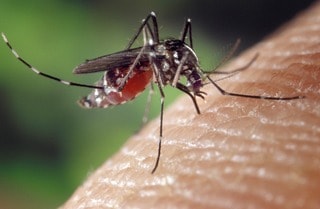
The takeaway is that you should avoid using blue and green LED lights on your patio, especially if you live in mosquito country.
You may want to check out; if Bug Zappers Work on Mosquitos and if they really work on the pesky buggers.
Biting Flies (Diptera)
Biting flies are blood feeders that carry a host of blood-borne disease-causing agents. Mosquitoes are just one example of the Diptera group, which includes sandflies, black flies, tsetse flies, and biting midges.
Biting flies showed two peaks in light sensitivity, one in the UV wavelength and another in the blue to green wavelength. The researchers found that the attractiveness of these wavebands varied throughout the day and seemed to be related to the insects’ circadian rhythms. This is another reason to avoid blue, green, and ultraviolet lights on the patio.
Various Kinds of Patio Lights
Patio lights come in many varieties, such as lantern style, globe lights, string lights, Edison style, caged lights, colorful lights, and rattan wrapped lights. String lights come in different types and colors, and some are waterproof. They are ideal for outdoor use, such as patios, barbecues, and garden wedding venues. To avoid attracting bugs, use LED string lights in the yellow, warm white, or ultra-warm white range.
Fairy String Lights
Fairy string lights can be used on the patio and resemble a gathering of fireflies. Although many people like to put them in trees, you can also use them in outdoor areas like porches and patios to give just enough light to see by. A University of Agriculture study in Pakistan found that up to seventy percent of bugs prefer cool blue light while only eight to ten percent were attracted to yellow light.
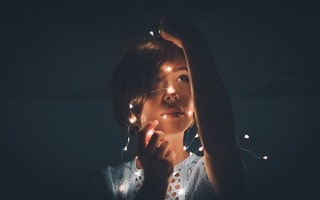
Fairy lights offer a subtle form of lighting and contain multiple small, low-intensity LED bulbs attached to a wire. They are available in various colors, so choose those with a warm white or yellow glow to attract fewer bugs. The advantage here is that they aren’t a single high-intensity light source but spread the light in a diffused glow around the patio.
Insects won’t be so attracted to the tiny individual light bulbs and won’t congregate around them in the same numbers as around a single very luminous light. They are not Edison bulbs, although some people refer to them as such. Make sure that those you buy have LED filament bulbs.
Rope Lights
These lights are enclosed in a protective PVC tube or rope that makes them frost and weather-resistant. Not all of them use LEDs, so be sure to check the packaging when buying them. Some cheaper rope lights use incandescent bulbs and are called such because their wiring is covered with rope. They emit heat, don’t last as long as the LED ones, and are not as energy-efficient. These will attract bugs, so don’t use them.

It made a big difference with the LED rope lights over the cheaper incandescent, like Christmas lights shoved in a tube. The LED rope lights especially the RGB versions allow to accent how you choose, and you can go yellow light only to help alleviate bug attraction.
Wire rope string lights contain tiny bulbs on a flexible wire that can be bent into different shapes for use outdoors on decks and patios.
Warm White Or Yellow LED Lantern Lights
Many people love oriental-type lanterns in which a colorfully decorated paper shade encloses the light source. Outdoor lanterns can be suspended from the roof, awnings, or rafters and are usually covered with a more durable material than paper. Some lanterns have places for candles inside, but these are likely to attract moths and other bugs.
Lanterns provide a few more intense light sources, unlike string lights which diffuse the light across a wider area. Don’t use lanterns that are too intense or emit a blue-white light if you want to avoid bugs. The stronger the light, the more it will attract unwanted visitors.
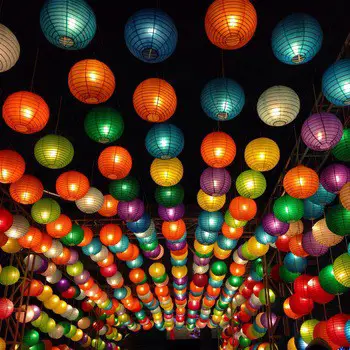
Some outdoor LED lanterns have the advantage of being portable, and many are rechargeable with electricity or solar energy. Solar-powered hanging lanterns can be suspended permanently over your patio as long as they get enough sun to charge their batteries. Some of them look like old-fashioned lamps with coppery frames and diamond panes, while others made from lightweight plastic have an appealing basket weave design and contain LED ‘candles’ that flicker.
Other LED lanterns look like hurricane lanterns and give a rustic feel to your patio. Just don’t mistake them for the traditional hurricane lamps that use kerosene. You can also buy outdoor wall-mounted lanterns or sconces that are weather-resistant and hard-wired into your electricity supply.
Compact Fluorescent Lights
Not all CFLs work equally well in not attracting bugs. There is a theory that insects can’t see a yellow light. Their eyes can only perceive ultraviolet, blue, and green light, so yellow CFLs are preferable to other colors.
The problem with CFLs is that they have sensitive filaments which can be adversely affected by weather conditions, unlike LEDs. This limits their potential for outdoor use. They are cheaper than LEDs but consume more energy and have shorter lifespans. The lifespan of the average CFL is only eight thousand hours compared to LEDs that last twenty-five thousand.
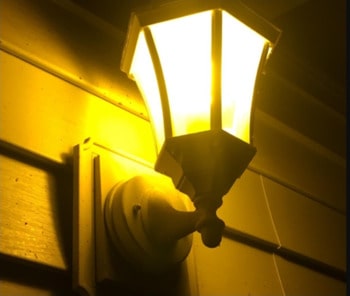
If you can locate them in sconces in a protected area against a wall or under a roof, this would be better. However, CFLs are slowly disappearing from stores as LED technology gains ground. If you want a permanent light installation on your patio, it would be better to use LEDs, or you might not be able to buy a replacement CFL bulb in a few years.
Edison Bulbs
Edison bulb string lights are another option and are for people who prefer that vintage look. They have the classic bulb shape that replicates those Edison invented but contain LED strips that come in warm white or yellowy-orange and can be quite beautiful. The LED technology they use is relatively new, and they can be a bit pricey.
Just remember that Edison bulbs are a type of incandescent lamp, and incandescent light has been shown to attract insects. The fact that they emit light on the longer end of the spectrum and are much dimmer than standard incandescent light works in their favor when it comes to not attracting bugs
They are sometimes called LED filament lamps because they contain a visible LED filament that is more energy-efficient than the usual incandescent bulb. It also lasts much longer – up to fifteen thousand hours. The light spreads out from them evenly in all directions. While many are dimmable, they can flicker and buzz with some dimmer switches, which might also attract insects.
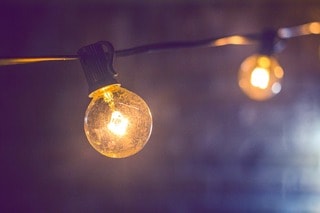
Edison LED filaments are arranged in various twisted designs that are aesthetically pleasing. They only produce half as much light as a standard incandescent bulb. Because they are a type of incandescent lighting, they give off a certain amount of heat which may attract the blood-sucking bugs that see in infrared.
They come in a wide range of styles that make them ideal as pendant lamps and come on wires that can be strung across a patio. You get weather-resistant Edison bulb string lights that can withstand winds of up to fifty miles per hour and won’t break in heavy rain. The wiring is also heavily insulated to prevent shorting, and the bulbs are made of plastic, not glass.
Yellow Bug Lights
Yellow bug lights have been around for a while, but are they all they are cracked up to be? According to the manufacturers, they don’t kill bugs, and they don’t repel them either; they just attract less of them. However, some of the studies already referred to found that while they may not attract as many flying insects, they are remarkably attractive to the earwig family and other crawling bugs.
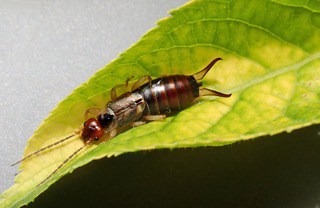
Earwigs can become a nuisance on well-lit patios and porches on summer evenings. When morning comes, they can be found hiding under objects that were left out overnight. They are insects with pincers at the end of their abdomen that give off a foul-smelling secretion when frightened or crushed and are regarded as pests in the home.
Mosquitoes and other biting flies are not worried by yellow bug lights because they use the infrared wavelengths to home in on warm-blooded animals and humans. Some people actively dislike the yellow light given off by bug lights, and studies have shown that amber, yellow, or warm white LEDs work better anyway.
Sodium Vapor and Halogen Bulbs
Sodium vapor and halogen lamps use gas to create light. Sodium vapor lamps are available as low-pressure or high-pressure and are often seen in street lighting. Their yellow color makes them particularly suitable for outdoor lighting, but the low-pressure ones inhibit color vision. A broken sodium lamp can be a serious fire hazard, so disposal of used ones is problematic.
Low-pressure sodium lamps are very efficient light sources and are effective in situations where color perception isn’t important. If you use them as a patio light, your surroundings will be a shadowy black because they are monochromatic. They don’t cause as much light pollution as other light sources, but they are also being overtaken by the LED revolution and won’t be around for much longer.
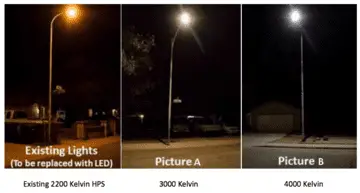
Halogen lamps are a kind of incandescent light used as work lights, floodlights, and spotlights, so they can be extremely bright. This level of light intensity will attract insects unless they have a yellow-tinted glass covering. Only halogen lamps rated for outdoor use should be used on a patio because they have to be in solid casings that protect them from the elements.
What Scientists Have Found About Lights That Attract Bugs
Studies have shown that mosquitoes found shorter UV light wavelengths less attractive than longer UV wavelengths while their attraction to yellow wavelengths varied, depending on the species. Longer wavelengths were less attractive to biting flies, but this is only true for visible light. One study found that using resting boxes with infrared caught more sandflies than boxes with shorter wavelengths.
Another thing the researchers noticed was that light intensity makes a difference. The more powerful the light, the more biting insects they caught. They pointed out that green LEDs are almost always more luminous than blue LEDs. The human eye cannot discern these intensity differences that are very noticeable to animals. The scientists speculated that green LEDs pulled larger numbers of insects than blue ones due to the perceived differences in intensity rather than wavelength.
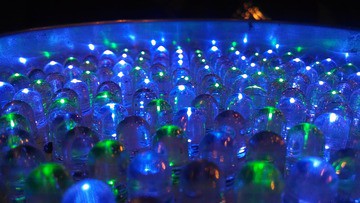
Insects don’t necessarily see in color the way we do and perceive different wavelengths and light intensities in ways we don’t completely understand. For instance, one study noticed that Anopheles mosquitoes were more attracted to blue LEDs than green ones of equal intensity. However, they were more attracted to the green LEDs when the intensity increased than the blue ones.
Therefore, it is necessary to consider not only the color of the lights you use on your patio but also their intensity. The flickering of the light also plays a role. All lights flicker, but humans can only see flickering within a limited range. Outside of this range, the human eye sees it as a continuous light.
Nocturnal and diurnal insects can detect flickering outside of the human range, affecting their attraction to the light. LED lights flicker faster than other types of lights, which may explain why they are less attractive to insects.
Light occurs in different wavelengths, which we perceive as different colors. Not only do insects have eyes very different from our own, but various species also respond differently to specific wavelengths depending on the structure of their eyes. Many of them are most visually sensitive to the blue and ultraviolet end of the light spectrum.
Research has shown that many flying insects have a positive phototaxic response to UV light, leading manufacturers to develop ultraviolet emitting bug zappers that attract and kill them. Yellow incandescent lamps are also marketed as not attracting insects and have been sold for many years. It’s claimed that the bulb’s yellow filter reduces light in the blue wavelength, reducing its allure for arthropods.
The fact that yellow incandescent bulbs don’t block the infrared component means they will still attract insects to the heat they give off. Commercially available white LED lights don’t emit UV light and give off only a small amount of infrared, but they do emit blue light. Bulbs that emit “cool” light shine more with blue light than those that emit “warm” light. The latter emits light in the yellow to orange end of the spectrum.
A study from 2016 by an ecologist, Michael Justice, showed that incandescent lights were the most attractive while warm LEDs were the least attractive. This was the first study to compare all the main bulb types used outdoors. He said that a shift to warm LED bulbs for outdoor use might significantly reduce the impact of light pollution on insects.
The types of lights tested were:
- Incandescent – most attractive
- Compact fluorescent light (CFL) – less attractive than incandescent
- Halogen – less attractive than CFL
- LED with a cool color temperature – less attractive than CFL
- LED with a warm color temperature – least attractive
In a 2021 paper, other scientists studied the attractiveness of LEDs in street lights to insects. They noted that phototaxis is heavily dependent on species-specific traits in insects. UV light is particularly appealing to many insect groups.
While the composition of white light can be adjusted to reduce the attraction, they found that different lighting systems had different impacts even with the same color temperatures. LED systems pulled the least number of insects compared to incandescent and CFL systems of similar color temperature.
LED light bulbs measure their color in terms of temperature expressed in degrees, Kelvin. The lower Kelvin numbers have a warmer, yellowish light, while the higher ones emit purples and blues. To avoid attracting insects, choose LEDs that have lower Kelvins. Try also to use lights with a lower wattage on your patio because bugs respond to light intensity and wavelength.
Considerations When Buying A Patio Light
Patio lights should ideally be on the yellow, red, and orange end of the spectrum, but this is not the end of the bug matter. A very luminous orange light will still attract more insects than a dimmer one. Also, the more heat the lamp gives off, the more attractive it will be to specific bugs.
Most yellow bug-lights are CFLs because they don’t give off as much heat as incandescent lights. However, LEDs are even better than CFLs, with the warm white ones being the best for outdoor lighting.
Bear in mind that bug zappers are designed to attract insects to them so that they can kill them. They can therefore increase the number of insects you attract to your patio. Bug-zappers emit violet and ultraviolet light and should not be confused with yellow bug lights. Apart from the fact that they attract insects, the problem with bug-zappers is that they are indiscriminate killers that are deadly to many beneficial insects like bees and moths.
In his study of different types of lights, Michael Justice found that the yellow bug light attracted more insects from the order Dermaptera, such as earwigs, than any of the bulbs that emitted white light. Bugs in the order Hemiptera, which includes stinkbugs and their cousins, were most attracted to the incandescent white bulb, but the yellow bug light also attracted many.
He says that a patio light that attracts insects by night may repel them by day, causing pests to take up residence in your garden and feast on your most prized plants.
If patio lights are likely to be exposed to weather, wind, and heat, you can buy commercial-grade outdoor string lights that are more heavy-duty. Some are even solar-powered, so if you live in a sunny climate, they may be worth your while. Just make sure the bulbs used in these weather-resistant fixtures are LEDs to minimize their attraction for bugs.
Never use UV lights outdoors, and remember that yellow, orange, or pink colored lights give off less UV than blue, purple, and green. Position your lights away from doors and windows and avoid using fluorescent and incandescent bulbs. If you don’t want to use yellow bug lights, opt for LEDs in the warm white to the yellowish range.
Conclusions
The evidence points to the superiority of yellow or warm white LEDs when it comes to being unattractive to bugs. LED systems consisting of multiple small points of light, like fairy lights or other string lights, are better than one bright LED light source that concentrates the light in one place. Bugs won’t be as attracted to subtle lighting on your patio as one or two large, bright lanterns, but whatever you choose, LEDs are the way to go.
These are our favorite string lights for accenting any patio. They are dimmable, or have variable brightness settings, they are made for outdoor use, and look antique to boot. Go to Amazon and check out our favorite patio string lights now.
Runner up lights for our patio are available at Amazon as well, check them out by clicking here.
Written by Will Montgomery, an outdoor living expert helping families find stylish, bug-free backyard solutions that work.


